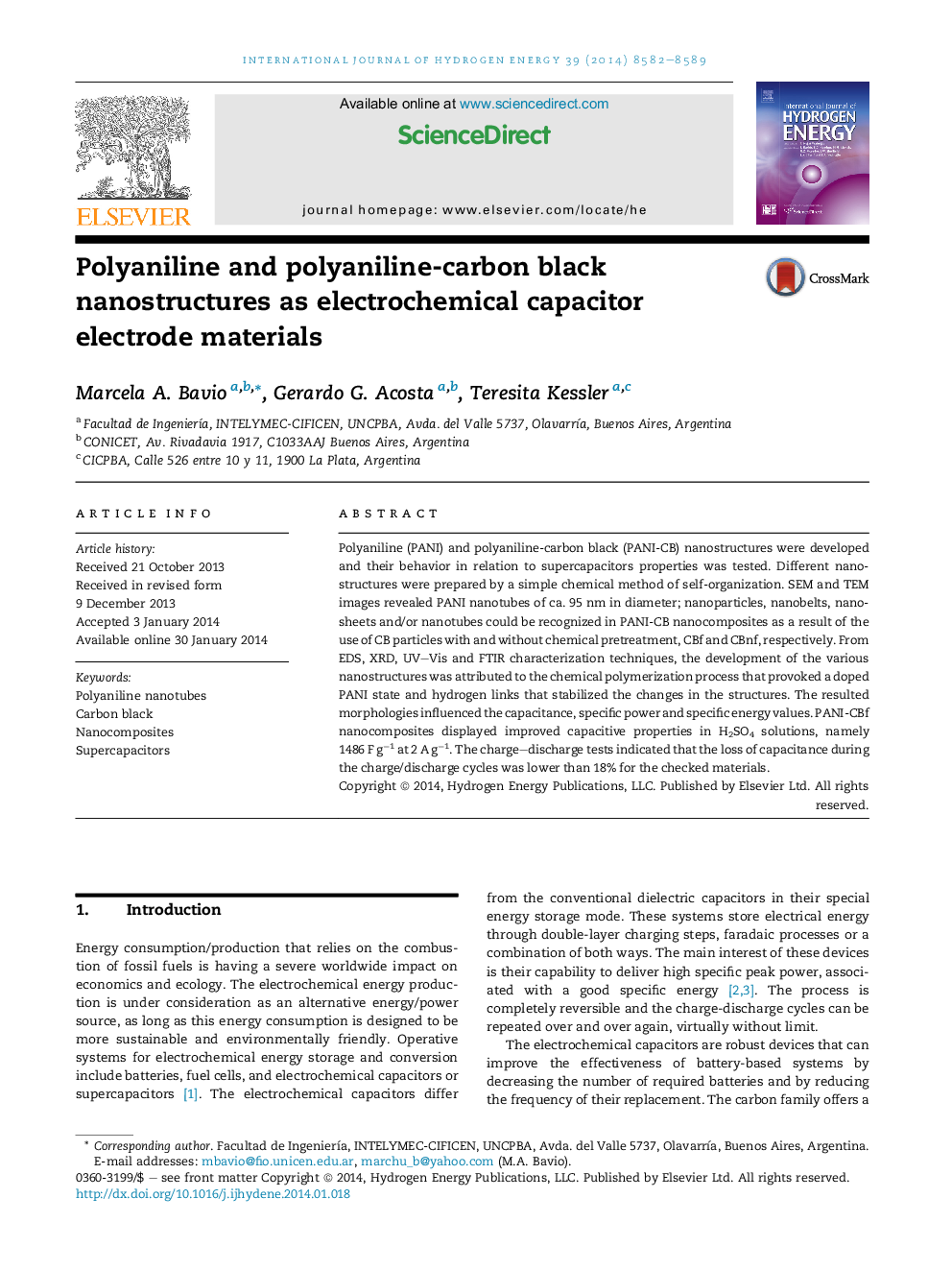| Article ID | Journal | Published Year | Pages | File Type |
|---|---|---|---|---|
| 7719378 | International Journal of Hydrogen Energy | 2014 | 8 Pages |
Abstract
Polyaniline (PANI) and polyaniline-carbon black (PANI-CB) nanostructures were developed and their behavior in relation to supercapacitors properties was tested. Different nanostructures were prepared by a simple chemical method of self-organization. SEM and TEM images revealed PANI nanotubes of ca. 95Â nm in diameter; nanoparticles, nanobelts, nanosheets and/or nanotubes could be recognized in PANI-CB nanocomposites as a result of the use of CB particles with and without chemical pretreatment, CBf and CBnf, respectively. From EDS, XRD, UV-Vis and FTIR characterization techniques, the development of the various nanostructures was attributed to the chemical polymerization process that provoked a doped PANI state and hydrogen links that stabilized the changes in the structures. The resulted morphologies influenced the capacitance, specific power and specific energy values. PANI-CBf nanocomposites displayed improved capacitive properties in H2SO4 solutions, namely 1486Â FÂ gâ1 at 2Â AÂ gâ1. The charge-discharge tests indicated that the loss of capacitance during the charge/discharge cycles was lower than 18% for the checked materials.
Related Topics
Physical Sciences and Engineering
Chemistry
Electrochemistry
Authors
Marcela A. Bavio, Gerardo G. Acosta, Teresita Kessler,
